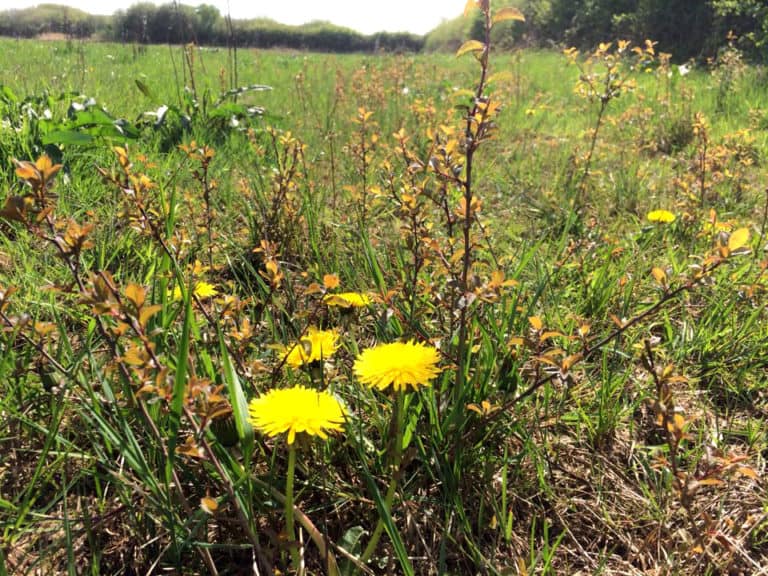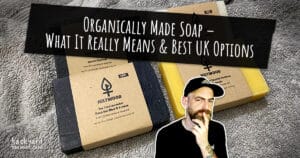How to get rid of weed naturally: Understanding ‘weeds’
- There are 2 types of weeds, annual and perineal
- Weeds cannot be removed permanently
- You can use salt and hot water to kill weeds
- Green manures can be used as cover plants suppress weed growth
Annual weeds
Annual weeds keep to a yearly life cycle of sprouting, then flowering followed by seeding. Whilst easier to control they can reach across your garden quickly.
Perennial weeds
Perennial weeds have a life cycle that can stretch over a number of years. They develop far reaching roots that establish themselves making them hard to control. A perennial plant can regenerate from root off cuts.
Thanks for reading and we hope you learn something you can use from this article. If you want to give back to us here at backyard-farmer.com, just click on an advert 🙂 Thanks!
What kills weeds permanently & naturally?
Staring down a garden full of weeds can be a bit overwhelming and may seem like an impossible task to clear them all. Do not be dismayed! with a multi-pronged approach and some general maintenance your garden will be clear of weeds in no time, naturally.
There is no real way to get rid of weeds ‘permanently’, the only way to do this is with artificial grass or patio. Even this needs regular maintenance, de-weeding and cleaning.
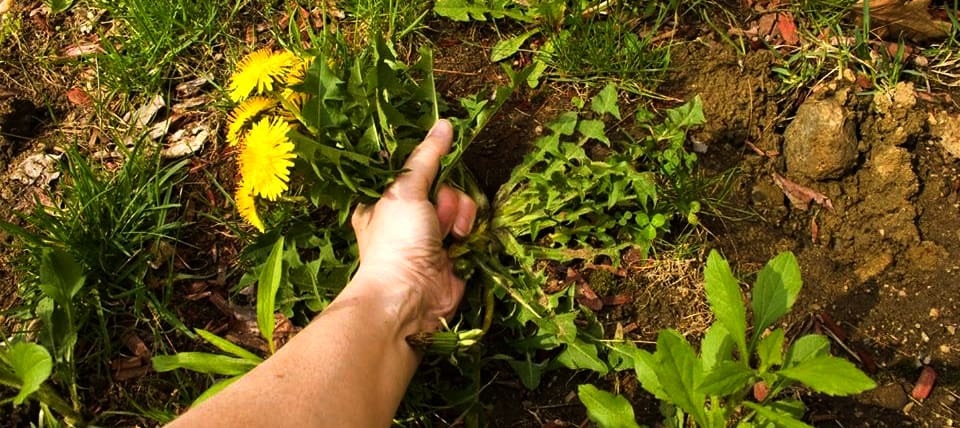
If you want to know how to get rid of weeds on your patio without using chemicals, see further down the article. Chemical free weed removal also means its safe to use around your cats and dogs!
If you are tackling a large yard, garden or even a field of weeds that has been over grown then you need to start from the top!
Once you’ve cleared weeds naturally, learn how to rotavate your garden properly for the next growing season.
#1 Removing large amounts of weeds
The first job is to hack back as much of the plant growth as possible. Using something like a machete or garden sheers begin to hack away at the area of weeds.
Once all the weeds have been cut down, clean up the area of loose plant matter with a rake. This plant matter can go into your composting heap/bin.
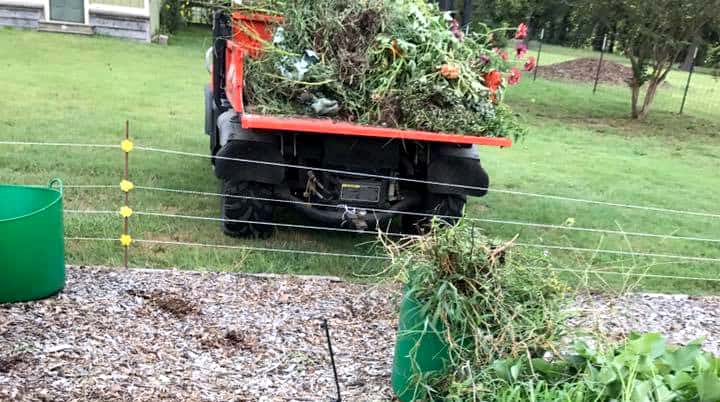
Weeds are particularly tough plants & cutting them down will not always finish them off for good. They can soon grow back from parts like their roots with a vengeance.
Turn over the area you are working on with a spade or garden fork, separating any root systems as you go. The roots of perennial weeds can soon re-establish themselves so we do not want to put these into the compost because they will turn up in next years vegetable patch!

#2 How to deal with perennial weeds roots
We now need to stop any new weed growth forming from these roots or disturbed seeds. The best way to do this is to deprive them of sunlight.
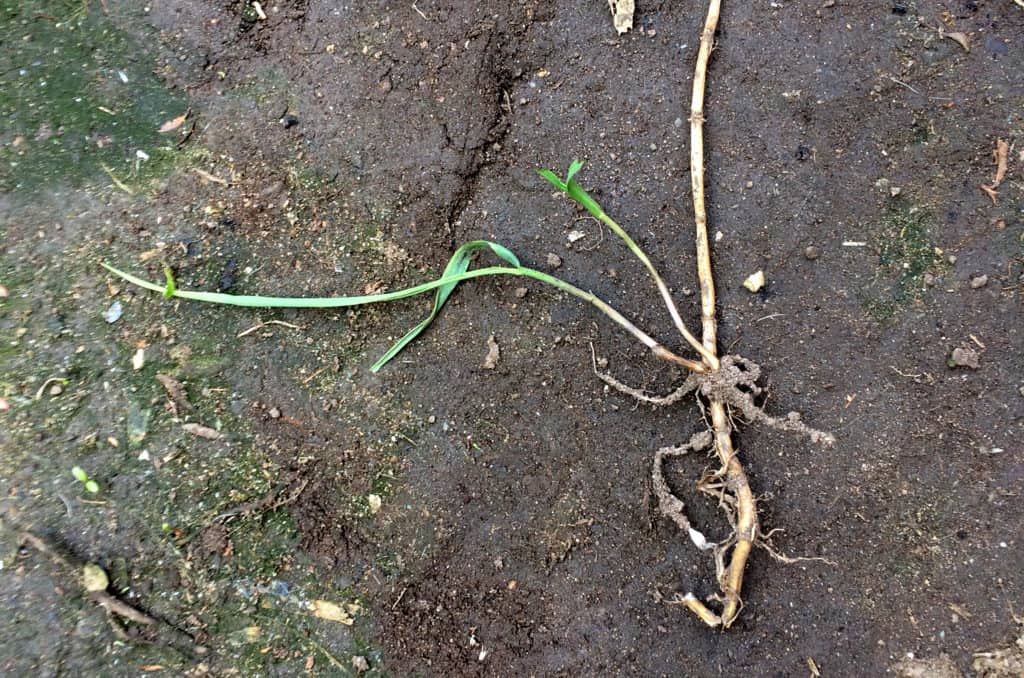
Using cardboard cover the area of ground you have just cut back, generously overlap the cardboard to reduce the light more effectively. This will help stop any new growth from re-emerging from underneath the card.
Weigh down the cardboard with heavy objects to stop them being blown away.
After 2 months the cardboard will start to rot and may need replacing. This all depends on your local climate so replace the cardboard as you see fit.
Some perennial weeds in particular can take a while to kill off, plants like
- Ground elder
- Hedge Bindweed
- Perennial Nettles
- Horsetail
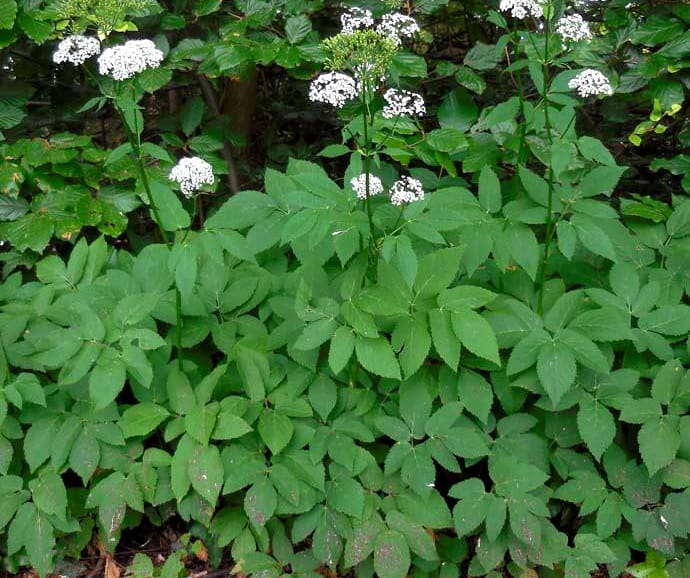
These weeds send roots in all directions and it can take a year or more for them to perish underneath the cardboard. Once rotted down the plant matter from the dead weeds will provide nutrients to the soil.
For larger areas you may want to purchase some ‘weed barrier fabric’ as it is easier to manage and secure over larger areas. It will also not need replacing as often as cardboard.
#3 The final cull of weeds and their root systems
After a year or so you can remove the covering. Underneath this you may find some new growth from some weeds that have managed to push through, we should deal with these first.
Removing the weeds
Now is the time to get your trowel, garden fork, hoe or shovel and dig out all the resurgent re-growth. Make sure you remove any parts of root as perennial plants can regenerate from these.
Do not put the root systems into your compost heap because the weeds will come back when you use the compost.
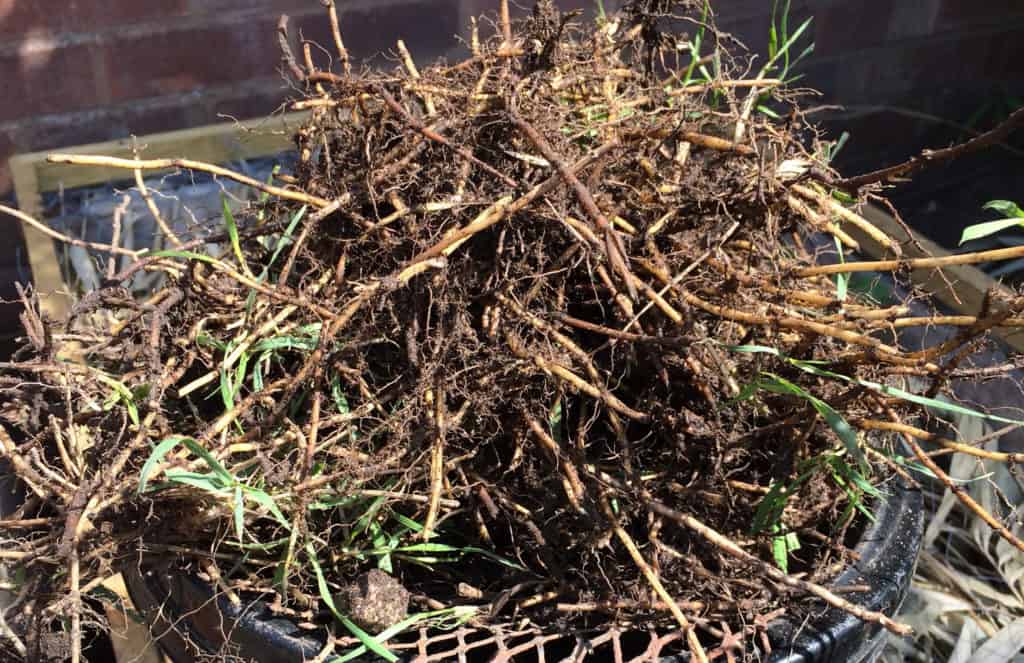
How to kill roots in water and make a compost tea
One way you can be sure those roots wont come back to haunt you is by submerging them in water for a month or more. This will reduce the roots into mush and create a compost teat that can then be fed to your plants.
- After separating he root systems from your soil place them in a bucket
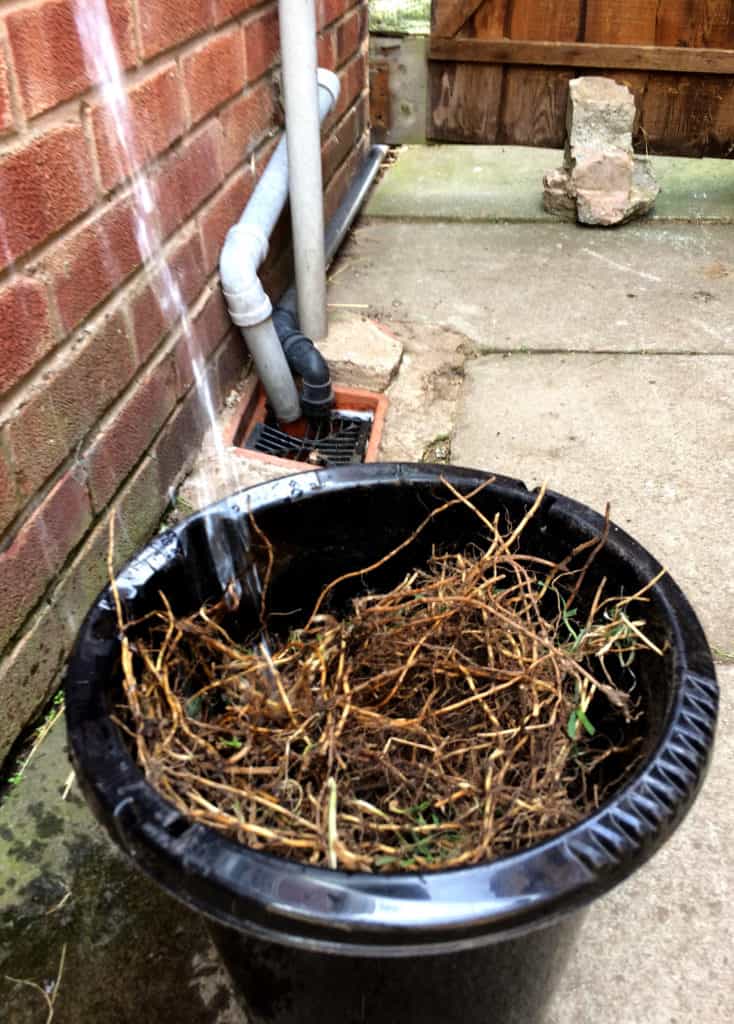
- cover the roots with water so they are submerged
- Block the sunlight with a secure lid and leave for 1 month or more
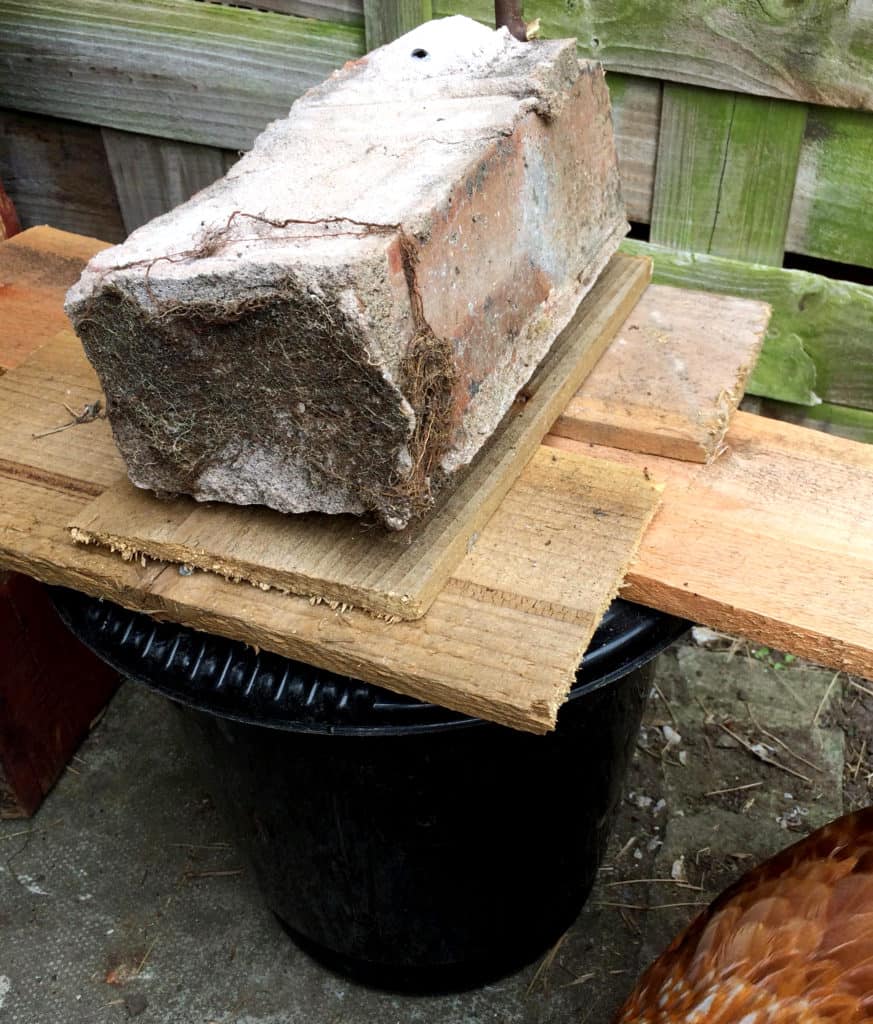
- Remove the lid and stir the mixture
- Dilute with 50/50 fresh water and use as a feed for your plants
Maintaining a weed free garden after removing them
To keep an area free of weeds will require some regular maintenance whether its a garden, vegetable patch or a patio. The good news is it can be done with little effort and cheaply (after getting them under control)
How you remove weeds will vary depending on where you are clearing them from. We’ll go through some common ways you can get rid of weeds easily and naturally.
Not only is this better for the environment, it is also safer for you, your family and pets or other animals.
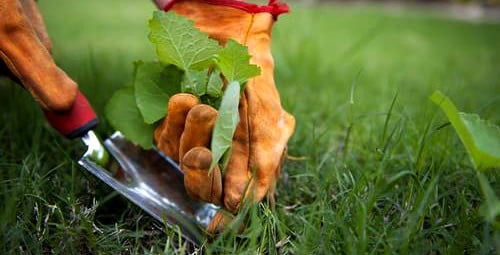
Keeping weeds from re-establishing between crops
Keeping on top of your weeding is essential and you will need to keep a weekly routine to be successful. A sharp garden hoe can make life much easier because you can disturb and cut the seedlings as they emerge.
- Get a trowel, spade but preferably a garden hoe
- Begin turning over the topsoil pulling out any weeds
- Leave seedlings exposed on the flower bed to be eaten, dry up or be blown away
- Maintain weekly to keep a weed free flower or vegetable bed
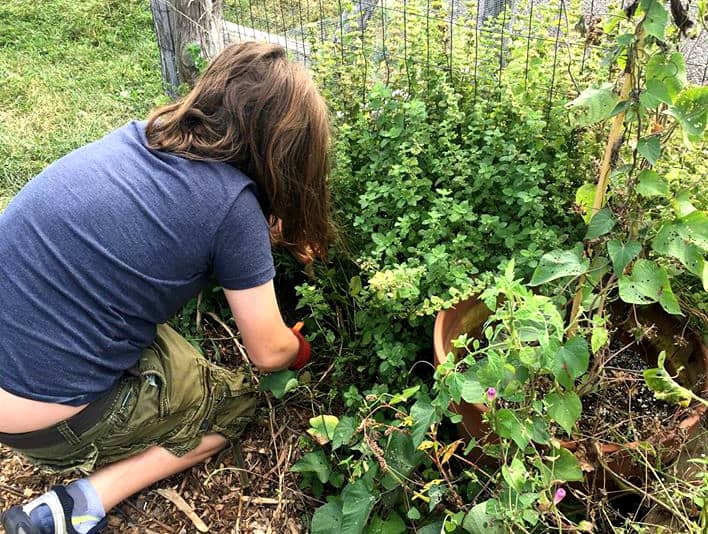
How to remove weeds from a patio
If your patio has weeds popping up left right and center you can use this natural method to clear them in no time!
Hot water and salt to kill weeds
- Clear your patio of furniture and give it a quick sweep
- In a watering can combine hot water and around 750g of salt to 5l-8l of hot (not boiling) watering
- Add the mix to a watering can and poor over the weeds you wish to kill
The salt mix can take around 10 days to work. This is because the salt is absorbed into the plant which in turn kills it. Whilst some well entrenched perennial weeds may return, annual weeds should be killed for the season.
Add vinegar to speed up the process
If you really cant wait for a week or so then you can always help the weeds along with a good dose of vinegar! After you have poured the hot salt water over the weeds finish them off by pouring over some vinegar too.
You can use white distilled vinegar or apple cider vinegar, both contain acetic acid.
Vinegar is full of ‘acetic acid’. It breaks down cell membranes leading to faster decomposition.
Pull up the dead weeds
After 7-10 days you see the weeds wilt and die off completely, in some cases this can be even faster. Once the plants have fully died off you will be able to easily pull them out of the ground roots and all.
For stubborn or well entrenched weeds who somehow survive the first wave will need to be treated again. Although this should not be very often.
Killing weeds with bleach
Do not use bleach to get rid of weeds because it is not effective or good for the environment. It could also have negative effects on your household pets!
Bleach only kills weeds, it still takes a few days for the plant to die. Just as it would if you used hot salt water or vinegar.
To see how you can kill weeds quicker than bleach with a natural method see the next section.
How to keep weeds out of the vegetable patch naturally
The best defense against weeds is to use other plants. These are the much easier to maintain than methods using things like cardboard or even worse plastic!
Using companion plants with big sun leaves like squash help deprive light to the soil during the growing season.
Mulch to suppress weed growth
Out of season you can mulch or cover crops to keep weeds from re-merging. Popular mulches that can keep weeds down are:
- Tree bark
- Dead leaves
- Straw or hay
- Grass clippings or other plant matter
Mulches also help to restore nutrients to the ground as they break down. This is great for getting things like raised beds ready for the coming growing season.
Remember to rake up and save the autumn leaves for mulching your growing areas over winter. Stopping weeds coming through, adding nutrition and protecting the soil below.
Cover crops & green manures
Cover crops work by crowding out weeds, beating them to sunlight and nutrients in the soil. Some great cover crops that you can use in Britain are plants like:
- Mustards
- Phacelia
- Grazing rye
- Winter vetch
They will grow in a matter of weeks depriving any weed of vital sunlight and nutrients. You can leave the cover plants to grow over winter and simply dig them out in spring.
Digging them out will reveal clear soil, weed free for your next season.
What are green manures?
Green manures can be grown to help replenish soil by re-introducing some nutrients like nitrogen. A plant such as mustard will stop any weeds being able to establish keeping the soil beneath free from weeds both above and below ground.
“One years seeding makes for 7 years weeding”

